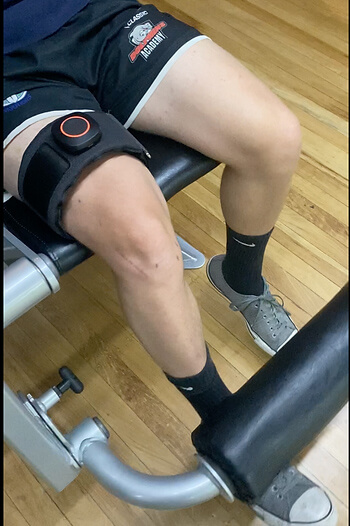Summary:
- Restriction of blood flow purportedly creates an internal environment of greater stress, thus greater adaptation
- Importantly, the greater adaptation can occur with less absolute load to damaged or painful tissues
- Started in healthy population to build muscles but the principles are transferable to rehabilitation
- Best suited persons who are unable to tolerate normal load
- Post surgery, tendinopathies and people needing to arrest atrophy or build muscle fast are best candidates
Blood flow restriction (BFR) training is becoming increasingly popular in rehabilitation and conditioning settings. As the name suggests, BFR training incorporates a restriction of blood to an area paired with low resistance training (20-50% of 1 rep maximum). The principle is to achieve greater muscle strength and hypertrophy gains for healthy and load-compromised populations with the same or less load than without a cuff. Essentially – more bang for your buck in the early phases of rehabilitation!
Benefits of BFR include; prevention of muscle mass in early post-operative periods, similar benefits of muscle mass and strength as heavier resistance training in achilles tendinopathies (>70% 1RM) (Centner et al, 2019), and improvement in maximum voluntary torque.

Whilst research is still being developed, multiple studies have been conducted recently showing the benefits of BFR training in post-operative populations ie. ACLR, patella / achilles tendinopathies, as well as knee osteoarthritis and patellofemoral pain syndrome.
Here at Praxis Physiotherapy, we have used a BFR cuff paired with low-resistance training on the reformer pilates and in the gym to optimise the distal quadriceps strength post ACL surgery. As you can see we are putting to the distal quadriceps to fatigue under a small amount of load, thus preventing muscle loss (Prue, et al. 2022) which can be common postoperatively.
General prescription guidelines according to the Australian Institute of Sport recommend that “the application of BFR should be limited to less than 20 minutes for lower limb, and 15 minutes for upper limb, before allowing adequate time for reperfusion of tissues (3 min).” (AIS, 2022).
In summary, this is an exciting new area of research that we are investigating clinically. Anecdotally, we hear from patients that they fatigue earlier in the desired muscle groups. We as a Praxis Team are embarking on some in clinic research in the area and hoping to provide feedback on our experiences so keep your eyes peeled. In the meantime, if you are pre or post your operation and are looking to maximise your recovery, come and have a chat with us about whether BFR is suitable for you!
Until next time,
Prevent | Prepare | Perform
Team Praxis
